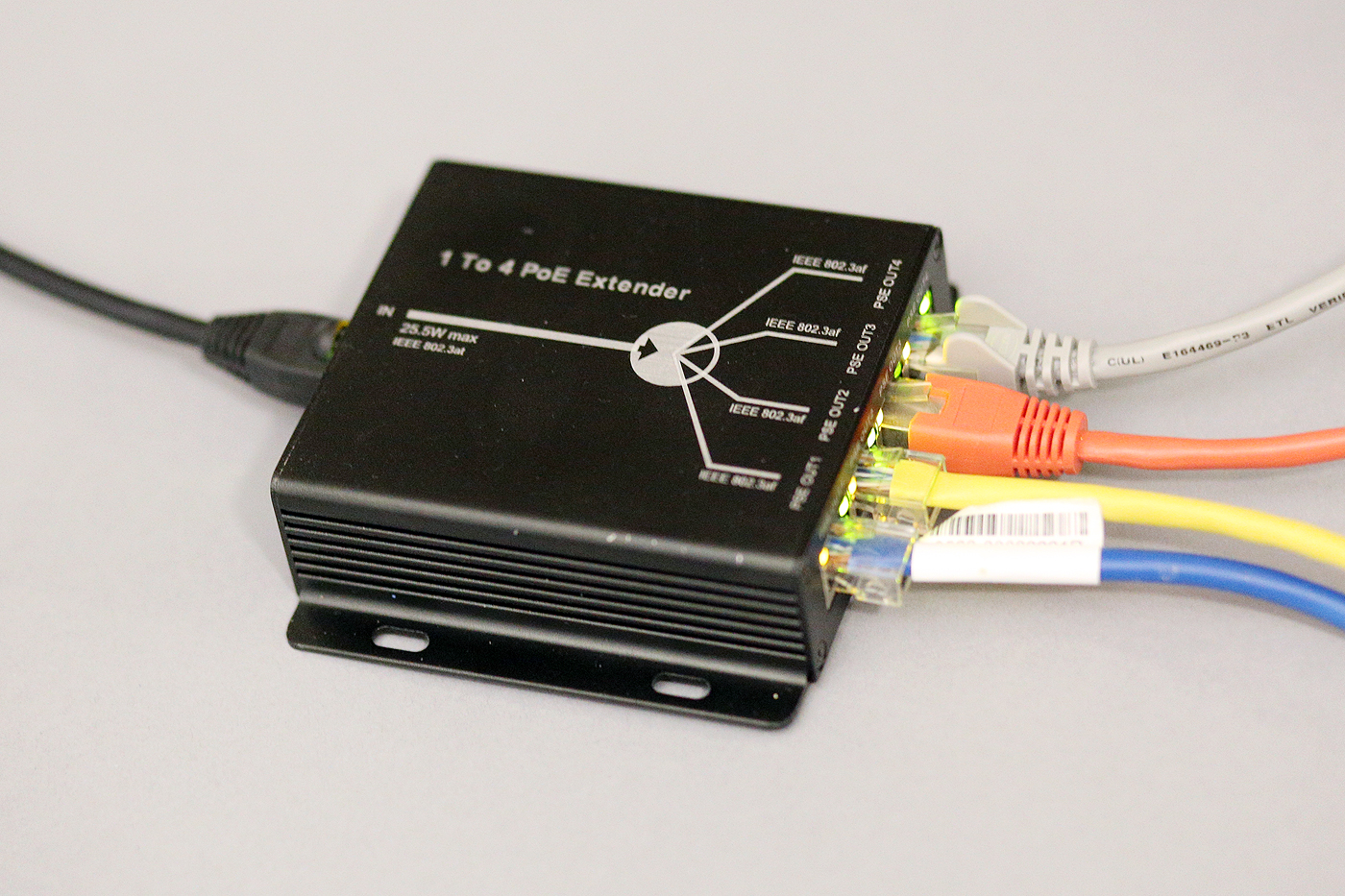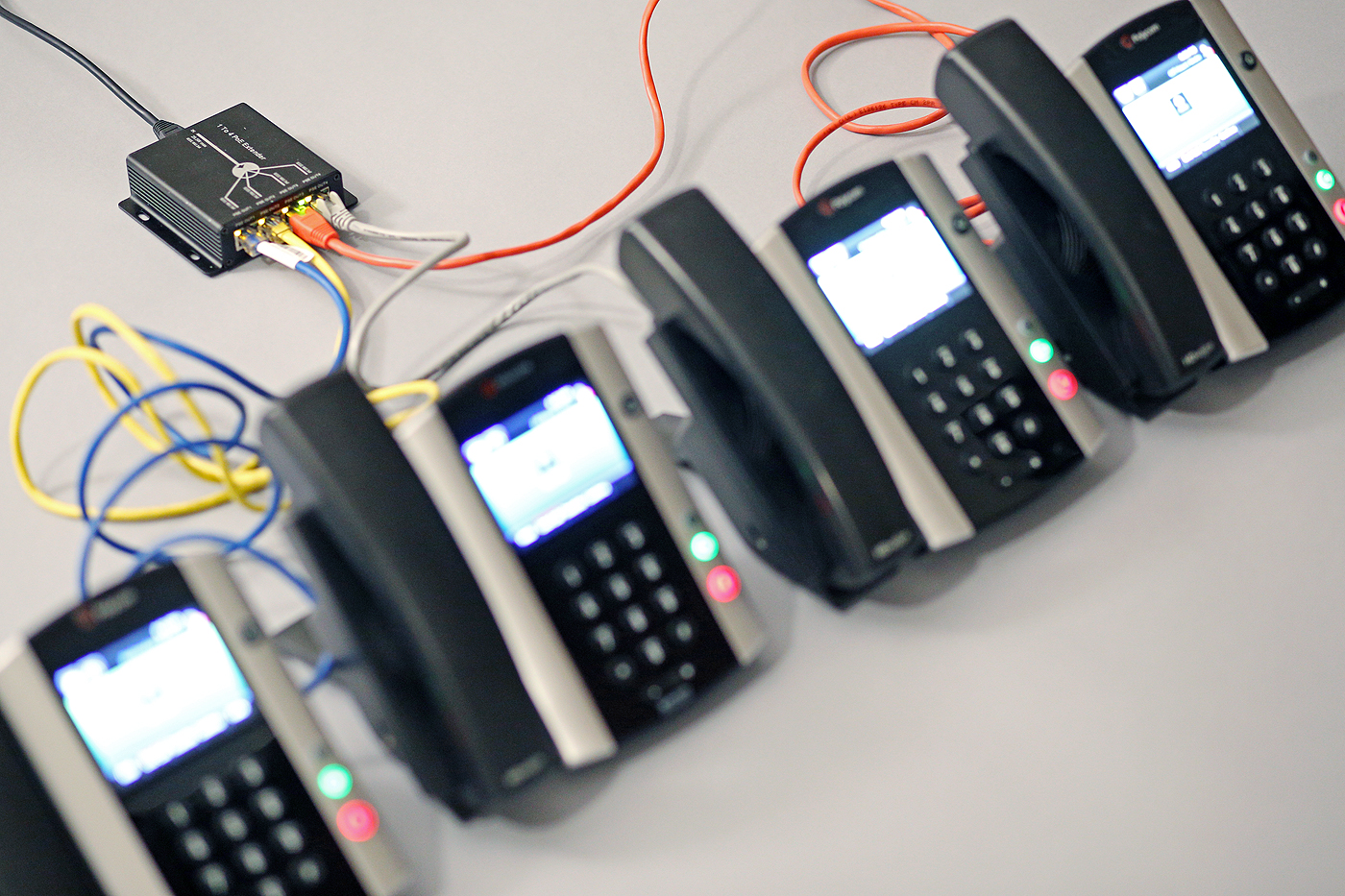Discovering the Limits of PoE
Not too long ago I found myself discussing electrical trends with a commercial engineer. I made a bold prediction about the rise of DC usage suggesting something to the effect of entire rooms being powered by Power over Ethernet (PoE). The engineer nodded enthusiastically and added that we aren’t too far away from replacing Romex wire with bell wire (20 gauge) for lighting and other controls. I could go on for days about the “smart home” potentials here, but going back to PoE devices, there still appears to be some technical hurdles that do not have solutions mapped out quite yet. That said, I think it is very important to discuss two solutions that now cost less than $40 and can drastically improve how PoE is implemented.
Power over Ethernet has many benefits. It’s easy to manage, easy to troubleshoot, and incredibly easy to install. If you have ever installed it, you’ll know that your main limits are distance and power draw. The other annoying part of PoE is the fact that for every device needing power, a dedicated cable needs to be pulled from the switch or source.
So what happens when local power is not available and there are multiple devices that need PoE power?
Enter the “1 To 4 PoE Extender” from basically anywhere on AliExpress, eBay, or Amazon, but not in physical stores (at least in the US).
For about $30, this device accepts PoE (PoE+ optimally) and does two things:
1.) Uses about a watt of energy to power an internal and traditional 4 port switch
2.) Divides the input power and provides PoE to each of the ports on that 4 port switch
The result is an amazingly simple but genius solution for specific scenarios where, again, power is not immediately or conveniently available and an additional device needs power. A common use case scenario involves security cameras where extra coverage is needed but the cost/logistics of running additional Ethernet makes this task impossible.
The 1 To 4 Extender is also capable of being daisy chained with the same limits as a traditional switch.
Stretching this technology to the next level, PoE is usually documented with a limit of about 300 feet. Recently, manufactures have come up with a way of extending this limit using the exact same core technology as the 1 To 4 Extender. PoE Repeaters can be set up in a daisy chain to basically “relay” the data signal while carrying the power source through each repeater. What was once a general limit of 300ft is now extended to roughly 1,300ft using a series of repeaters (depending on brand, cable type, and power source).
I decided to take this to the test. I purchased 1000 feet of Cat5e and split it into 300ft, 300ft, 300ft, and 100ft lengths. From there I tapped into each distance and recorded the results, using an IP Phone and IP Camera as test subjects.
Full 1000ft cable = Powers devices, no data connection though
300ft = Powers devices, devices work
400ft = Powers devices, devices work
700ft = Powers devices, devices report no data connection
**Now we know our limits. Let’s try to add a PoE Repeater.**
300ft –> PoE Repeater –> 300ft –> Device = Devices work perfectly
300ft –> PoE Repeater –> 300ft –> 100ft –> Device = Devices work perfectly
300ft –> 100ft –> PoE Repeater –> 300ft –> 300ft –> Device = Devices work perfectly
I only used one repeater in my test, and was still able to get both devices powered and working perfectly at a distance of 1000 feet. If this was more than a simple test, however, I would strongly encourage the use of multiple repeaters every 300ft to ensure proper data transmission.
I will add both devices together using an input source of just 15W (802.3af) and extend my test phones 600ft to illustrate how this technology works together.
At this distance, a fourth phone added to the 1 To 4 Extender was enough to drain the device beyond operation. Each phone consumes about 4-5W during a call. If I used Cat6 cable and supplied 802.3at rated power (30W) all four phones would work without issue.
PoE has been around for ages, but more and more devices are finally starting to efficiently harness its power. Get creative with these solutions and play with their limits because, soon enough, we will see this technology used in applications beyond networks.


